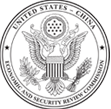×
Filter Results
Filter Results
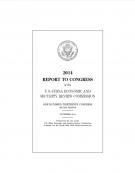
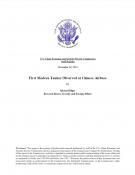
Staff Paper
This report examines the context and implications of satellite imagery of an IL-78/MIDAS air refueling tanker at a Chinese military airbase.
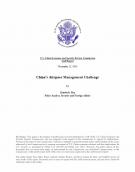
Staff Paper
As the number of civil aviation users increases and the aviation industry continues to mature in China, Beijing seeks to strike a balance between liberalizing its airspace to respond to growing commercial demands and retaining a strict military hold on airspace for the purpose of national security. This report explores China's efforts to reform air traffic control and airspace management, as well as challenges China may face as it seeks further reform.
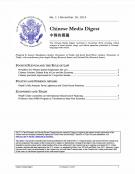
Research
Highlights of this edition: President Xi’s Plenum Speech Emphasizes the Law; Chinese Scholars Debate Rule of Law and the Economy; Chinese Journalist Imprisoned for Corporate Slander; People’s Daily Analyzes Party Legitimacy and China-Russia Relations; People’s Daily Comments on International Infrastructure Financing; Professor Sees EMBA Program as Tarnished by State-Run Economy


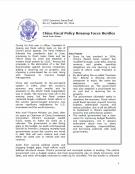
Issue Brief
Key Points:
Since its last overhaul in 1994, China’s flawed fiscal system has muddled through. Local debt, slowing revenue, and greater spending obligations are now spurring a new round of reform under President Xi Jinping;
By eliminating the so-called “business tax,” Beijing is allowing services companies to enjoy the same tax deductions and rebates manufacturers do. The government may also establish a price-based tax on coal and a recurring tax on property;
The government ultimately seeks to rebalance the economy. Fiscal reform could boost services, prevent housing bubbles, redistribute income, and reduce pollution. But it will be difficult to implement in China’s segmented economy and authoritarian system;
The central government has a clear vision for improving budget flexibility and transparency. Yet it remains ambivalent about how to share revenue, spending responsibilities, and borrowing authority with local governments.

Issue Brief
Key Points• Chinese authorities have used Hong Kong’s position as a global financial center to promote the use of the RMB abroad. Hong Kong is the oldest and largest market for offshore RMB transactions, and will remain so despite the emergence of several other offshore contenders.
• To date, RMB internationalization efforts have involved three main channels: offshore RMB deposit accounts and bonds, use of the RMB for cross-border trade settlement, and establishment of RMB swap lines between the People’s Bank of China and other central banks.
• Despite growth in onshore and offshore use, the RMB cannot become a true international currency until Chinese authorities liberalize China’s capital account, allowing for unrestrained movement of financial flows.
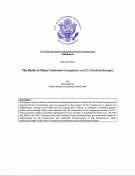
Staff Paper
In May 2014, Alibaba, China’s leading e-commerce website, filed for a U.S.-based initial public offering (IPO) in what is expected to be one of the largest in U.S. history. The highly anticipated IPO will be just one in a recent wave of Chinese Internet companies launching IPOs in the United States. The trend has raised some misgivings among U.S. regulators about the corporate structures of these companies. To bypass Chinese government restrictions on foreign investment in the Internet sector, Chinese Internet companies use a complex and highly risky mechanism known as a Variable Interest Entity (VIE).
An addendum was added to this paper on September 12, 2014.

Staff Paper
This report examines 35 years of cooperation between the United States and China in the areas of science and technology (S&T) since the signing of the 1979 U.S.-China Science and Technology Cooperation Agreement.
